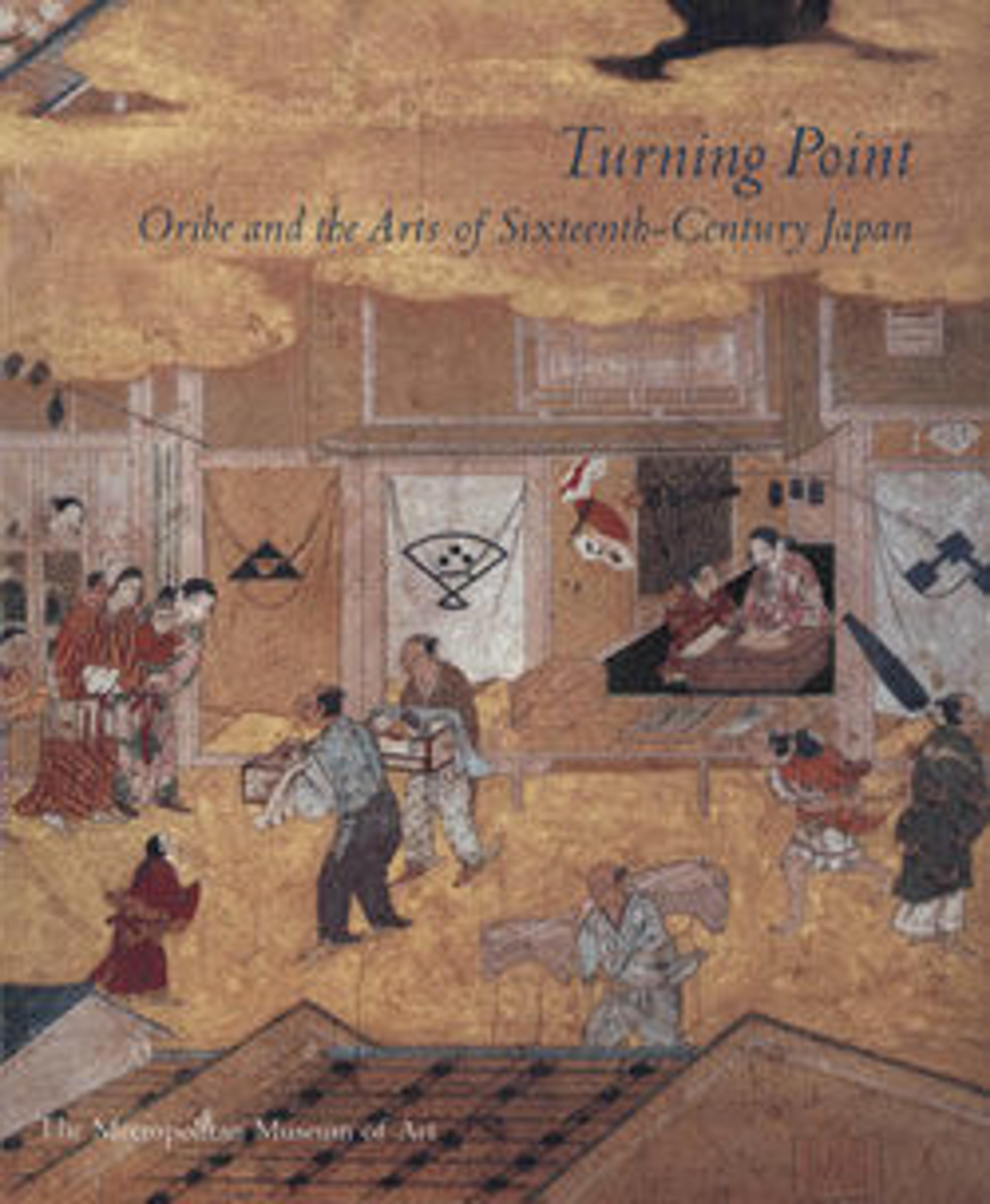Tagasode (“Whose Sleeves?”)
In classical love poetry the phrase Tagasode (“Whose Sleeves?”) refers to an absent woman whose beautiful robes evoke memories of their owner. A number of screens bearing this sobriquet depict sumptuously patterned kimonos draped over lacquered clothing stands. This example displays fashionable textile patterns of the late sixteenth through early seventeenth century. Some of the robes have delicate tie-dyed patterns (“fawn spots,” or kanoko shibori), representing the refinement of Kyoto taste. Beginning in the medieval period, Kyoto was known for its textile industry, centered in what is now the Nishijin district. Empress Consort Tōfukumon’in (1607–1678), wife of Emperor Go-Mizunoo (1596–1680), frequently ordered richly ornamented garments from Kariganeya, a textile shop catering to the old aristocracy, and her purchases initiated official imperial patronage of Kyoto textiles.
These screens were recently rebuilt and restored in the Department of Asian Art’s conservation studio with funding from Patricia Saigo and others.
These screens were recently rebuilt and restored in the Department of Asian Art’s conservation studio with funding from Patricia Saigo and others.
Artwork Details
- 誰ヶ袖図屏風
- Title: Tagasode (“Whose Sleeves?”)
- Period: Momoyama (1573–1615) or Edo (1615–1868) period
- Date: first half of 17th century
- Culture: Japan
- Medium: Pair of six-panel folding screens; ink, color, gold, silver, and gold leaf on paper
- Dimensions: Overall (each screen): 59 1/4 x 10 ft. 10 11/16 in. (150.5 x 332 cm)
- Classification: Paintings
- Credit Line: H. O. Havemeyer Collection, Gift of Mrs. Dunbar W. Bostwick, John C. Wilmerding, J. Watson Webb Jr., Harry H. Webb, and Samuel B. Webb, 1962
- Object Number: 62.36.2, .3
- Curatorial Department: Asian Art
More Artwork
Research Resources
The Met provides unparalleled resources for research and welcomes an international community of students and scholars. The Met's Open Access API is where creators and researchers can connect to the The Met collection. Open Access data and public domain images are available for unrestricted commercial and noncommercial use without permission or fee.
To request images under copyright and other restrictions, please use this Image Request form.
Feedback
We continue to research and examine historical and cultural context for objects in The Met collection. If you have comments or questions about this object record, please contact us using the form below. The Museum looks forward to receiving your comments.
